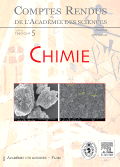
COMPTES RENDUS CHIMIE
Scope & Guideline
Connecting Ideas, Inspiring Discoveries in Chemistry.
Introduction
Aims and Scopes
- Interdisciplinary Research in Chemistry:
The journal promotes studies that bridge multiple disciplines, reflecting the interconnected nature of modern chemical research, such as biochemistry, materials science, and environmental chemistry. - Catalysis and Reaction Mechanisms:
A significant focus is placed on catalysis, exploring both homogeneous and heterogeneous processes, along with detailed mechanistic studies that advance the understanding of chemical reactions. - Sustainable Chemistry and Green Approaches:
The journal is committed to publishing research that emphasizes sustainability, including the development of eco-friendly catalysts, waste valorization, and renewable energy sources. - Computational Chemistry:
There is a strong emphasis on the use of computational methods to elucidate reaction mechanisms, predict properties, and design new materials, which complements experimental studies. - Bioinorganic and Medicinal Chemistry:
Research on the role of metal complexes in biological systems and their applications in medicinal chemistry is a recurring theme, highlighting the significance of inorganic elements in health and disease. - Nanotechnology and Advanced Materials:
The journal covers innovative developments in nanomaterials, their synthesis, characterization, and application in various fields, including drug delivery, catalysis, and environmental remediation. - Analytical Chemistry:
A focus on novel analytical techniques and methodologies for the detection and quantification of chemical species in complex matrices, reflecting the demand for high-throughput and sensitive analysis.
Trending and Emerging
- Women in Chemistry and Diversity Initiatives:
Recent publications highlight the contributions of women chemists and emphasize the importance of diversity in the field, showcasing initiatives aimed at fostering inclusivity in scientific research. - Ecocatalysis and Biomass Valorization:
There is a growing interest in ecocatalysts and the conversion of biomass into valuable chemical products, aligning with global sustainability goals and the need for greener chemical processes. - Advanced Characterization Techniques:
Emerging themes include the application of advanced characterization methods, such as synchrotron radiation and high-resolution imaging, to study complex materials and reaction mechanisms at the nanoscale. - Artificial Intelligence in Chemistry:
The integration of AI and machine learning techniques in chemical research is on the rise, with studies focusing on predictive modeling, optimization of synthesis, and data analysis. - Environmental Remediation Technologies:
Research aimed at developing innovative technologies for the removal of pollutants from the environment, including water treatment and waste management, is increasingly prominent. - Photocatalysis and Sustainable Energy Solutions:
The journal is seeing a trend towards research on photocatalytic processes for energy conversion and environmental applications, highlighting the role of light-driven reactions in sustainable chemistry.
Declining or Waning
- Traditional Organic Synthesis:
There has been a noticeable decline in studies centered solely on traditional organic synthesis techniques, as the field moves towards more innovative and sustainable methods. - Classical Inorganic Chemistry:
Papers focused on classical inorganic chemistry concepts, such as coordination chemistry without interdisciplinary applications, have decreased, suggesting a shift towards more integrated research. - Historical Perspectives in Chemistry:
Though the journal has published historical articles, the frequency of such topics has diminished, indicating a trend towards contemporary research themes that address current scientific challenges. - Basic Chemical Education Studies:
Research focusing on basic chemical education and pedagogy appears to be waning, as the journal prioritizes more advanced and applied research in chemistry. - Localized Studies with Limited Applications:
There is a decline in research that focuses on localized or niche applications without broader implications, as the journal seeks to highlight studies with wider relevance and impact.
Similar Journals
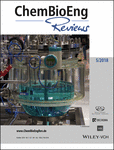
ChemBioEng Reviews
Transforming Ideas into Bioengineered SolutionsChemBioEng Reviews is a premier academic journal dedicated to advancing the fields of biochemistry, bioengineering, and chemical engineering. Published by WILEY-V C H VERLAG GMBH, this journal serves as an essential platform for researchers and professionals seeking to disseminate groundbreaking insights and innovations. With a remarkable impact factor and a solid reputation, it is ranked in the top quartile (Q1) across multiple disciplines, including Biochemistry, Bioengineering, and Industrial and Manufacturing Engineering. The journal's comprehensive scope covers the synthesis, analysis, and application of bioengineered solutions, making it a vital resource for anyone involved in process chemistry and technology. With an unwavering commitment to high-quality scientific discourse from 2014 to 2024, ChemBioEng Reviews is not only pivotal for the academic community but also contributes to industry advancements in filtration, separation processes, and the intersection of chemical and biological engineering.

Moscow University Chemistry Bulletin
Unveiling Cutting-Edge Discoveries in ChemistryMoscow University Chemistry Bulletin is a distinguished academic journal dedicated to advancing the field of chemistry, published by PLEIADES PUBLISHING INC. With an ISSN of 0027-1314 and an E-ISSN of 1935-0260, this journal provides a platform for researchers, professionals, and students to explore a wide range of topics in general and specialized chemistry. While it holds a current Q4 ranking in the “Chemistry (miscellaneous)” category according to Scopus, the journal is committed to broadening its scope and visibility, aiming for greater impact in the global scientific community. Moscow University Chemistry Bulletin focuses on the publication of cutting-edge research, reviews, and discussions that stimulate innovation and collaboration. Although it is not an Open Access journal, it plays a crucial role in disseminating knowledge and fostering academic dialogue within the field, as it converges towards significant findings from 2004 to 2024. The continuous development of its content holds the potential to attract a diverse readership, making it a valuable resource for those involved in the chemical sciences.

Journal of Industrial and Engineering Chemistry
Exploring Sustainable Solutions in Chemical EngineeringThe Journal of Industrial and Engineering Chemistry, published by Elsevier Science Inc, stands as a premier platform since its inception in 1996, dedicated to the dissemination of innovative research in the field of Chemical Engineering. Located in South Korea, this influential journal has established itself with an impressive impact factor and is categorized in the Q1 quartile for chemical engineering (miscellaneous), ranking in the top 12% of its category according to Scopus. With a focus on cutting-edge industrial applications, the journal covers a diverse range of topics including chemical processes, engineering innovations, and sustainable practices, appealing to a broad spectrum of researchers, professionals, and students. Although currently not open access, the journal offers a wealth of resources for advancing knowledge and driving forward the chemical engineering discipline. The converged years from 1996 to 2024 reflect its ongoing commitment to excellence and timeliness in publishing high-quality research.
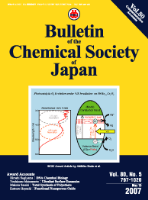
BULLETIN OF THE CHEMICAL SOCIETY OF JAPAN
Empowering Discoveries: Your Gateway to Chemical InsightsBULLETIN OF THE CHEMICAL SOCIETY OF JAPAN, published by the esteemed Chemical Society of Japan, serves as a pivotal platform for the dissemination of cutting-edge research in the multifaceted field of chemistry. With an ISSN of 0009-2673 and an E-ISSN of 1348-0634, this journal has been integral in fostering the growth of chemical sciences globally since its inception in 1965. The journal holds an impressive Q2 ranking in the Chemistry (miscellaneous) category, indicating its relevance and influence within the academic community, as reflected by its Scopus rank of #104/408, placing it in the 74th percentile. Although it is not an open-access journal, its rich content, which spans a wide range of topics in general chemistry, remains highly valued by researchers, professionals, and students alike, affirming its crucial role in advancing both theoretical knowledge and practical applications in chemistry. As it converges towards 2024, the bulletin continues to uphold its commitment to excellence in scientific communication and research dissemination in Japan and beyond.
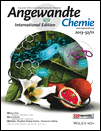
ANGEWANDTE CHEMIE-INTERNATIONAL EDITION
Pioneering Discoveries in Chemistry and EngineeringANGEWANDTE CHEMIE-INTERNATIONAL EDITION, published by WILEY-V C H VERLAG GMBH, stands as a leading journal in the fields of Chemistry and Catalysis, holding a prestigious position with a Q1 ranking in both categories as of 2023. With an ISSN of 1433-7851 and an E-ISSN of 1521-3773, this esteemed publication has been an invaluable resource for the global scientific community since its inception in 1962. The journal's impact is further underscored by its remarkable Scopus rankings, where it occupies the 13th place among 408 journals in General Chemistry and the 4th place among 68 in Chemical Engineering - Catalysis, marking it in the 96th and 94th percentiles, respectively. Although it does not offer Open Access, ANEWANDTE CHEMIE-INTERNATIONAL EDITION remains essential for researchers, professionals, and students seeking to stay abreast of cutting-edge developments and innovations in chemical sciences. Its comprehensive scope and rigorous peer-review process ensure that only the highest quality research finds its way to publication, contributing significantly to the advancement of chemistry worldwide.
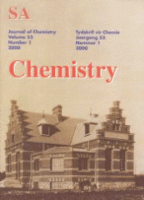
SOUTH AFRICAN JOURNAL OF CHEMISTRY-SUID-AFRIKAANSE TYDSKRIF VIR CHEMIE
Elevating South African Chemistry on the Global StageSouth African Journal of Chemistry (Suid-Afrikaanse Tydskrif vir Chemie), published by Bureau Scientific Publications, is a pivotal open-access journal that has been disseminating groundbreaking research in the field of chemistry since its inception in 1996. With an ISSN of 0379-4350 and an E-ISSN of 1996-840X, this journal serves as a vital platform for researchers and professionals seeking to share their work and engage with the global chemistry community. Recognized for its significant contributions, the journal holds a Q3 quartile ranking in the miscellaneous chemistry category as of 2023 and ranks #216 out of 408 in General Chemistry according to Scopus. The South African Journal of Chemistry is dedicated to advancing knowledge in the discipline by publishing a wide array of articles, reviews, and studies that address pertinent chemical research and applications. With open access options available since 2000, it fosters a collaborative environment, ensuring that research is accessible to all, thereby enhancing the visibility and impact of chemists' work across South Africa and beyond.
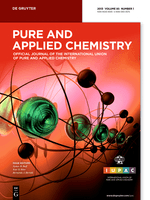
PURE AND APPLIED CHEMISTRY
Pioneering Insights in Chemical Engineering and BeyondPURE AND APPLIED CHEMISTRY is a highly regarded journal in the fields of chemical engineering and general chemistry, published by Walter de Gruyter GmbH. Since its inception in 1960, this journal has continued to foster advancements in chemical research and facilitate the dissemination of new knowledge through its rigorous peer-reviewed articles. With an impressive impact factor that places it in Q2 quartile rankings for both Chemical Engineering and Chemistry as of 2023, it holds a significant position in the academic landscape, attracting authors and contributors from around the globe. The journal’s unique focus on the practical applications of chemical research makes it indispensable for researchers, professionals, and students aiming to bridge theoretical knowledge with real-world applications. Although it is not open access, its impact is enhanced by its continued relevance and contributions to the ever-evolving field of chemistry. Researchers and practitioners alike will find in PURE AND APPLIED CHEMISTRY a critical resource for staying updated on key developments and innovative practices in chemistry and chemical engineering.
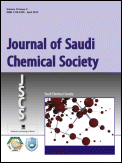
Journal of Saudi Chemical Society
Elevating Research Standards in the Chemistry Community.The Journal of Saudi Chemical Society, published by ELSEVIER, stands as a premier platform for advancing knowledge in the field of chemistry. Since its inception in 2009, this Open Access journal has garnered significant attention, securing a prestigious Q1 ranking in the Chemistry (miscellaneous) category for 2023, reflecting its position among the top journals in the discipline. With an impressive Scopus ranking of #66 out of 408 in General Chemistry, this journal boasts a commendable 83rd percentile, underscoring its impact and relevance in the global research community. The journal aims to disseminate high-quality research articles, reviews, and case studies, fostering innovation and collaboration among chemists and allied professionals. By enabling widespread access to cutting-edge research, the Journal of Saudi Chemical Society plays a crucial role in supporting the educational and professional development of students, researchers, and practitioners alike, making it an essential resource for anyone invested in the dynamic field of chemistry.
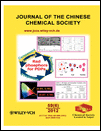
JOURNAL OF THE CHINESE CHEMICAL SOCIETY
Illuminating the Path of Chemical InnovationJOURNAL OF THE CHINESE CHEMICAL SOCIETY, published by WILEY-V C H VERLAG GMBH, is a vital resource in the field of chemistry, focusing on a broad array of topics pertinent to general chemistry and its advancing sub-disciplines. Established in 1954 and running through 2024, this journal serves as a significant platform for the dissemination of high-quality research, showcasing innovative findings and developments within the chemical sciences. With its Q3 category ranking and positioning at Rank #203 in General Chemistry per Scopus, it reflects the journal's commitment to research excellence and impact. While not an open-access publication, it ensures accessibility to a global audience, making it an essential tool for researchers, professionals, and students alike seeking to stay informed and engaged in the evolving landscape of chemistry.

Bulletin of the University of Karaganda-Chemistry
Connecting Researchers to Drive Chemical DiscoveriesBulletin of the University of Karaganda-Chemistry is an esteemed academic journal published by KARAGANDA STATE UNIVERSITY, focusing on the field of chemistry and related disciplines. With an ISSN of 2518-718X and an E-ISSN of 2663-4872, this journal aims to disseminate high-quality research articles, reviews, and scholarly discussions that contribute to the advancement of knowledge in chemistry. Although it has experienced a transition in its coverage from 2021 to 2022, the journal remains a significant platform for researchers and students alike, promoting open access to its valuable content. Despite its current Scopus rank of #379/407 in the general chemistry category, the Bulletin of the University of Karaganda-Chemistry serves as a vital resource for the academic community in Kazakhstan and beyond, fostering collaboration and innovation in various chemical research domains. Researchers, professionals, and students are encouraged to engage with the journal as it continues to evolve and contribute to significant scientific discussions.